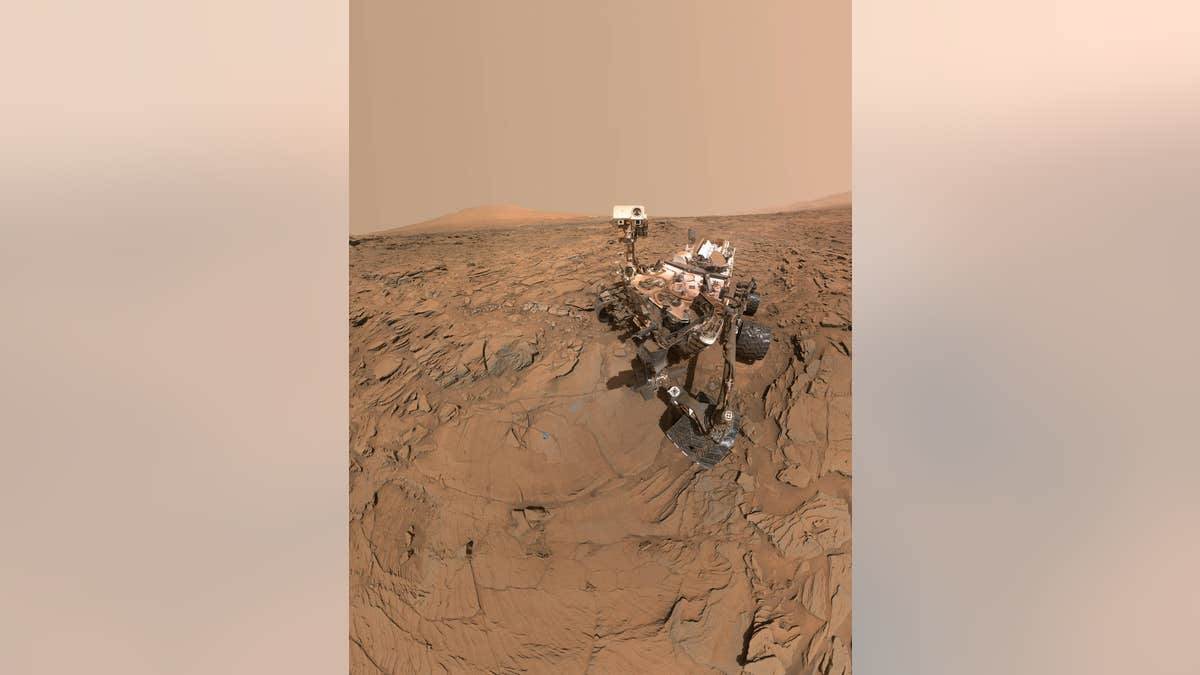
This selfie of NASA's Curiosity Mars rover shows the vehicle at a drilled sample site called "Okoruso," on the "Naukluft Plateau" of lower Mount Sharp. The scene combines several images taken with the rover's Mars Hand Lens Imager (MAHLI) on May 11, 2016, during the 1,338th Martian day, or sol, of the rover's work on the Red Planet. (NASA/JPL-Caltech/MSSS)
If you find yourself on Mars anytime soon, beware: there’s a rover exploring its surface, and it now has the ability to choose its own targets for its onboard laser-- and even fire it autonomously.
The six-wheeled, nuclear-powered Curiosity has the laser to help it analyze the rocks it encounters on the red planet. As it fires, an instrument onboard the rover analyzes the wavelengths of the plasmas released from the targeted rock, and that lets scientists know what the rock is made of chemically.
The instrument is called ChemCam, and it was developed in part by the Los Alamos National Laboratory in New Mexico. According to the lab, Curiosity now picks “multiple targets” on its own weekly. The rover has shot its laser over 350,000 times, and the rock samples can even be analyzed from as much as 23 feet away, Los Alamos says.
“This new capability will give us a chance to analyze even more rock and soil samples on Mars,” Roger Wiens, the principal investigator for ChemCam at Los Alamos, said in a statement. “The science team is not always available to pick samples for analysis. Having a smarter rover that can pick its own samples is completely in line with self-driving cars and other smart technologies being implemented on Earth.”
Related:
Not only can it choose its own targets, but it can actually fire the laser at them autonomously too, as long as the target meets the set criteria, a spokesperson for NASA's Jet Propulsion Laboratory told FoxNews.com.
That criteria is set by scientists back on Earth who tell the rover what aspects to look for when choosing a target.
The software that makes this all possible is AEGIS, and the new system should let the rover get more science done. So far, it’s analyzed about 1,500 samples, Los Alamos says.
The one-ton Curiosity has been exploring Mars since it landed on 2012 in Gale Crater, looking for evidence of whether or not microbial life ever existed on the planet. Recently, NASA just got the green light to develop the next generation rover, called Mars 2020. That Curiosity-like rover is slated to land on Mars in 2021.
Follow Rob Verger on Twitter: @robverger




















